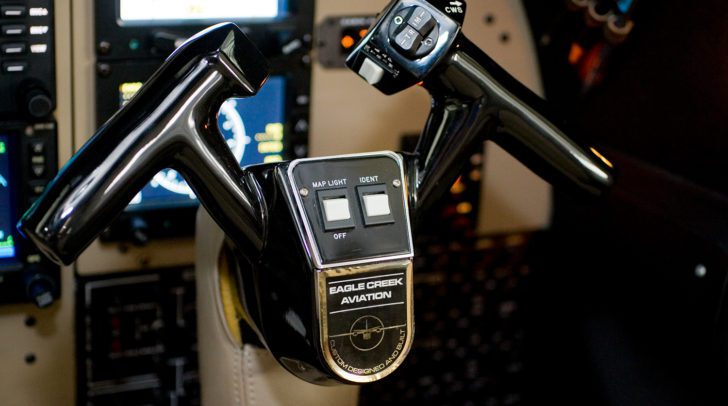
Loss of control (LOC). You’ve probably heard the term, but you may have no idea what it means. The definitions vary, but center on the idea of the aircraft unintentionally departing controlled flight. What exactly that means, why it happens so often, and what we can do about it are less clear.
Accidents as diverse as thunderstorm encounters and overshooting the base-to-final turn are included in loss of control, which makes the category so diverse it can be difficult to understand the problem. Ed Wischmeyer, an engineer and pilot who has spent time at Embry-Riddle Aeronautical University, Apple, Gulfstream, and others, has come up with a solution that he thinks will help address the core group of these accidents.
Despite a career conducting research and development in avionics, Wischmeyer doesn’t think technology is the key to reducing LOC accidents. Instead, he has developed a series of Expanded Envelope Exercises (E3) that seek to better prepare pilots for the unusual cases that lead to loss-of-control accidents.
Wischmeyer’s presumption is that because most pilots fly squarely in the middle of the flight envelope, the risks increase greatly anytime they find themselves well outside that envelope. His exercises get the pilot to the edge of an airplane’s normal flight envelope without going over. While many experienced pilots may practice upset recovery training, Wischmeyer said that is meant to address what happens once the pilot has already flown off the cliff. E3 is meant to say, “There’s the cliff. Let’s stop.”
The program includes dozens of different fully developed exercises and ideas for exercises with the goal that each training organization will take the material and create a custom syllabus. Among the long list of exercises are nine that Wischmeyer says form a core group to discover and that have been tested in a training environment. They are:
- Taxiing – Precise aircraft control on the ground as a warm-up.
- Slow Dutch rolls – Bank changes constantly while the nose remains fixed.
- Slow Dutch rolls at a constant altitude – A more difficult variation.
- Fast Dutch rolls – Rapid bank changes can be more disorienting, which makes this variation more difficult. Full aileron deflection is required.
- Turning stall recovery – With banks between 30 degrees and 45 degrees, a challenge for pilots who’ve never tried it.
- Turning stall, opposite recovery – Recover, but in a turn of the opposite direction.
- Banked sawtooth climb – Alternating series of climbs and descents at a constant airspeed.
- Low speed 60/90 turns – Alternating 90-degree turns with 60-degrees of bank.
- Runway alignment – A chance to reevaluate and reconsider how and when to turn base to final.
E3 is starting to catch on. Utah Valley University is testing the exercises for inclusion in its syllabus, and Wischmeyer has some interest from LeTourneau University in Texas as well. There two senior instructors tested some of the maneuvers in the school’s Citabria and told Wischmeyer they were disorienting. To him that’s an affirmation. “If senior instructors at a university program in an aerobatic airplane found it disorienting, that tells me we are teaching too close to the middle of the envelope,” he said.
Wischmeyer suggests that Twin Commander owners consider a single-engine airplane if they would like the try the maneuvers with an instructor. The roll rates are higher and there’s no worry about Vmc.
The next step for Wischmeyer is to further refine the exercises, gain new partners to test, and then do the hard work of making sure pilots know and understand the airplane’s full potential. It won’t be easy.
